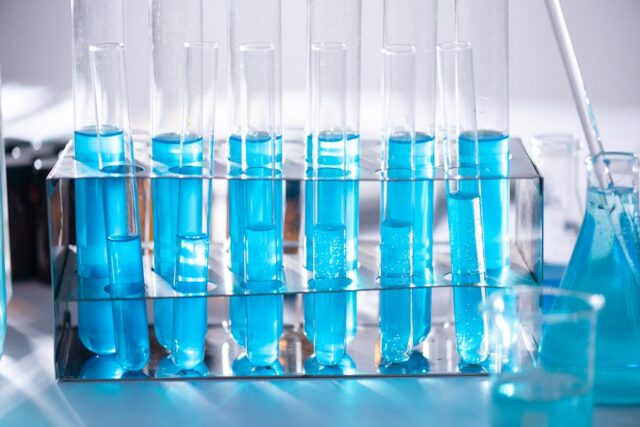When it comes to understanding chemistry concepts, one of the most important terms is molar mass. In this article, we will delve into “what is the molar mass of CHCl3” and explore its multiple values: 48.47 g/mol, 83.92 g/mol, 119.37 g/mol, and 121.39 g/mol. Calculating the molar mass is crucial in both educational settings and practical applications in chemistry. This compound, chloroform (CHCl3), is widely used in various industries, from solvents to anesthetics.
Understanding the molar mass helps chemists and students determine the amounts of different substances involved in reactions. Whether you’re a student, educator, or just curious, we’ll break down how these molar mass values are calculated and which of these values is the correct one.
Let’s explore the accurate molar mass of CHCl3 and the essential concepts you need to grasp to calculate it yourself. By the end of this article, you’ll have a solid understanding of CHCl3 and how its molar mass fits into broader chemical reactions.
Calculating Molar Mass in 3 Simple Steps
Understanding how to calculate the molar mass of a compound is a fundamental skill in chemistry. Molar mass is the total mass of all atoms in a molecule, measured in grams per mole (g/mol). It’s important for everything from simple classroom exercises to industrial applications, as it helps determine the proportions of substances involved in reactions. In this section, we’ll guide you through calculating the molar mass of chloroform (CHCl3) in three easy steps.
1. Identify the Chemical Formula
The first step in calculating molar mass is to identify the chemical formula of the compound. For this example, we’ll use CHCl3, which is chloroform. The formula represents one atom of carbon (C), one atom of hydrogen (H), and three atoms of chlorine (Cl). Identifying the formula ensures you know the number of each atom involved, which is critical for accurate calculations. Understanding the molecular composition allows you to proceed confidently when looking up atomic masses.
2. Look Up Atomic Masses
The next step is to refer to the periodic table and find the atomic masses of each element in the compound. For chloroform (CHCl3):
- Carbon (C) = 12.01 g/mol
- Hydrogen (H) = 1.008 g/mol
- Chlorine (Cl) = 35.45 g/mol (for each chlorine atom)
The atomic masses of elements are essential data points when calculating molar mass. Without them, it’s impossible to determine the total mass of the compound. Make sure you use the most accurate atomic masses available, as small variations can affect your results.
3. Multiply and Add
Now, you multiply the atomic masses by the number of atoms in the formula and then add them up to find the total molar mass of CHCl3:
- Carbon = 12.01 g/mol (1 atom)
- Hydrogen = 1.008 g/mol (1 atom)
- Chlorine = 35.45 g/mol × 3 (three atoms of chlorine)
When you add these together, the molar mass of chloroform (CHCl3) equals 119.37 g/mol. This final step sums up the contributions of each element to the total mass, providing you with the compound’s molar mass, which is vital for accurate chemical calculations.
Why Molar Mass Matters In Chemistry
Molar mass is one of the most fundamental concepts in chemistry, providing essential information about the relationship between the mass of a substance and the number of particles, such as atoms or molecules, in that substance. It plays a crucial role in understanding chemical reactions, calculating formulas, and conducting laboratory experiments. Whether you are a student or a seasoned chemist, the significance of molar mass cannot be overstated.
Balancing Chemical Reactions
One of the primary reasons molar mass matters in chemistry is its role in balancing chemical equations. To accurately predict the products and reactants of a chemical reaction, chemists need to know the exact quantities of each substance involved. Molar mass allows you to convert between grams and moles, helping you determine how much of a substance is required or produced in a reaction. Without knowing the molar mass, you could end up with incorrect ratios, which leads to inaccurate results.
For example, in a reaction involving chloroform (CHCl3), knowing its molar mass (119.37 g/mol) helps you calculate the exact amount needed to react with another substance. This precision is vital, especially in industrial chemistry and pharmaceuticals, where accuracy is paramount.
Determining Product Yields
Molar mass is also essential for calculating product yields in chemical reactions. When conducting experiments, chemists often want to predict how much of a product will form from a given amount of reactants. By using the molar mass, you can convert between mass and moles, making it possible to determine how much product to expect. This is particularly important in industries like manufacturing, where maximizing product output can significantly affect efficiency and cost.
For instance, if you’re synthesizing a compound that involves CHCl3 as a reactant, knowing its molar mass allows you to estimate how much product can be obtained, minimizing waste and optimizing resources.
Understanding Molecular Composition
In addition to its role in chemical reactions, molar mass helps chemists understand the composition of molecules. By calculating the molar mass of a compound, you can determine how much of each element is present in a specific amount of the compound. This information is crucial for identifying compounds, understanding their structure, and predicting their behavior in reactions.
Molar mass also plays a key role in stoichiometry, which is the study of quantitative relationships in chemical reactions. Accurate stoichiometric calculations depend on precise molar masses, making it an indispensable tool for anyone working in a chemistry-related field.
molar mass is a fundamental concept in chemistry that helps chemists balance reactions, predict yields, and understand molecular structures. Without it, the study and practice of chemistry would be much more difficult and less precise.
Common Misconceptions About Molar Mass Values
Molar mass is an essential concept in chemistry, but it’s also one that can lead to confusion, especially when people encounter multiple values or miscalculate the molecular weight of a compound. Understanding the molar mass of CHCl3 (chloroform) is straightforward, yet there are a few common misconceptions that arise when people calculate or interpret these values. Let’s break down some of the most frequent misunderstandings to help you avoid errors in your calculations.
- Mixing Up Atomic Mass and Molar Mass: One of the most common mistakes is confusing atomic mass with molar mass. Atomic mass refers to the mass of a single atom of an element, while molar mass is the sum of all atomic masses in a compound, measured in grams per mole (g/mol). For example, some might mistakenly think that the molar mass of chloroform (CHCl3) is based only on the mass of chlorine (35.45 g/mol) or carbon (12.01 g/mol). However, molar mass requires adding the atomic masses of carbon (C), hydrogen (H), and chlorine (Cl) together to get the total value.
- Rounding Errors: Another common misconception comes from rounding atomic masses incorrectly. For instance, the molar mass of chlorine is often rounded to 35.5 g/mol instead of the more precise 35.45 g/mol. While small, this discrepancy can affect calculations when working with large quantities of substances. For CHCl3, the difference might seem minor, but in a laboratory setting, accuracy is crucial. It’s essential to use the correct values from a reliable periodic table to avoid these small, but impactful, errors.
- Misinterpreting Multiple Molar Mass Values: Sometimes, learners come across multiple molar mass values for a compound, which can lead to confusion. For chloroform, values like 48.47 g/mol, 83.92 g/mol, and 121.39 g/mol are occasionally mentioned in error. These values are incorrect, often resulting from calculation mistakes or mixing up different compounds entirely. The correct molar mass of CHCl3 is 119.37 g/mol. Be cautious of unreliable sources or incorrect problem-solving techniques that might suggest otherwise.
- Ignoring Isotopic Variations: Isotopes can sometimes cause confusion in molar mass calculations. While the molar mass of CHCl3 is generally accepted as 119.37 g/mol, some may mistakenly factor in isotopes, especially for chlorine, leading to slightly different values. In most cases, the standard atomic masses should be used unless you’re working specifically with isotopically enriched samples.
By understanding and avoiding these common misconceptions, you can ensure that your calculations for molar mass are accurate and reliable. Always use correct values, pay attention to rounding, and differentiate between atomic and molar mass for the best results.
Summary
In summary, the correct molar mass of CHCl3 is 119.37 g/mol. This value is derived by adding the atomic masses of carbon, hydrogen, and chlorine. Understanding molar mass is a fundamental skill in chemistry, useful in predicting reaction outcomes, balancing chemical equations, and performing accurate laboratory experiments.
FAQ
Is molar mass the same as molecular weight?
Yes, in most contexts, molar mass and molecular weight are used interchangeably, although molar mass is typically expressed in g/mol.
Can molar mass vary for the same compound?
No, the molar mass for a specific compound like CHCl3 remains constant, but calculation errors can lead to different results.
What is the molar mass of CHCl3?
The molar mass of chloroform (CHCl3) is 119.37 g/mol.














